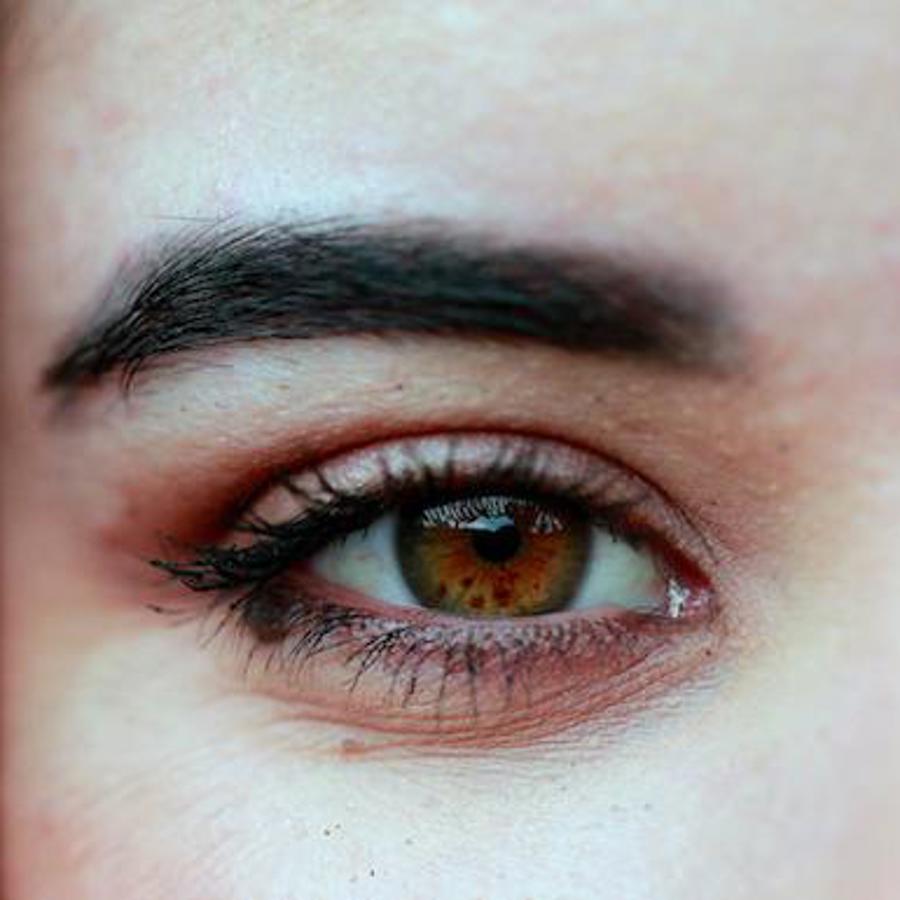
Which eye color alleles do I have?
April 28, 2005

- Related Topics:
- Eye color,
- Pigmentation traits,
- Common questions
A curious student from Slovenia asks:
"Hi I was wondering if you could tell me what allelic frequency is? And can you tell me which allele I have?
My grandmother on my mother’s side has blue eyes, my grandfather has green eyes, and my mother and her brother have green eyes too.
My father’s dad has blue eyes and his mother has brown. He has brown eyes, but some of his brothers and sisters have green eyes and one I think has blue.
My brother and I both have dark brown eyes. I am the eldest."
Editor’s note (7/12/2021): Some information in this article is out of date. While it describes eye color as a simple trait that may be caused by 2 genes, scientists now know this is incorrect. Eye color is a complex trait, influenced by at least 50 different genes. This makes it much harder to predict someone’s alleles than described below. This article also describes recessive genes as “broken” while dominant genes are “working”, which is not always true.
Wow, it sounds like you have a lot of different eye colors when your family gets together. Not like mine, where everyone has brown eyes.
When I was in high school, my biology teacher had me thinking that eye color genetics was easy. Boy, was I wrong!
There are many genes that control what color eye a person has. As you may already know, genes come in different types.
I like to think of the different types as either working or broken. Professors at my college call them dominant (working) or recessive (broken). And we refer to the different types of a gene as the alleles.
So, what is allelic frequency? Allelic frequency is just a fancy way of asking how many copies (frequency) of a particular gene copy (allelic) are in a population.
A simplified example of eye color
As I told you before, eye color genetics is pretty complicated. But let's try to simplify it for this question, shall we? We'll set up a less complicated model in which two genes, BEY2 and GEY, control eye color. Now what happens when these two genes are working (dominant) or broken (recessive)?
It turns out that working copies of the BEY2 gene turn your eye color brown and broken copies of the BEY2 gene make your eye color blue. What about the GEY gene?
Well, working copies of the GEY gene turn your eye color green and broken copies make them blue. But in this case, if the BEY2 gene has a working copy of its gene, then you will still get brown eyes. Told you it was complicated.
But now that you have some understanding of eye color genetics, let's start talking about allelic frequency...because that is what you asked for!
My guess is that you have one broken and one working copy of the BEY2 gene. How did I figure that out? Well, because your mother has green eyes, she has only broken BEY2 genes.
That means she could only give you a broken copy of the BEY2 gene. Because you have brown eyes that must mean that you got a working copy of the BEY2 gene from your dad.
We don't have enough information to do this for the GEY gene. So let's just use the BEY2 gene to learn about allelic frequency.

A simplified example of allelic frequency
We know a lot about the BEY2 gene copies in your family. That is because we know your parents', brother's, and your eye colors. We know that you, your brother and your father each have a working copy and a broken copy of the BEY2 gene. We know this because at least one of their parents did not have brown eyes and each of you has brown eyes.
We also know that your mother has two broken copies because she has green eyes. We can now figure out the allelic frequency of working and broken BEY2 genes.
There are four people in your family. Each person has two copies of the BEY2 gene. So we have a total of eight copies.
We also know that there are 5 copies of the broken version. You, your brother and father each have one broken copy. Your mom has two broken copies. That leaves us with 3 working copies. Again, you, your brother and father each have one. Your mom has none. So what is the frequency of these alleles?
We shall DIVIDE and conquer this question! We want to know how often, or the frequency, right? Well one way we can figure this out is to find out the percentages.
If we know what percentage of the total each copy is, we can know the frequency! So, let's divide the number of each copy by the total number of copies of our BEY2 genes.
Working Copy BEY2 Gene: 3
Broken Copy BEY2 Gene: 5
Total Copies of BEY2 Gene: 8
Allelic Frequency of Working Copy: 3/8 = .375 or about 38%
Allelic Frequency of Broken Copy: 5/8 = .625 or about 63%
This is way different than the allelic frequencies in my family. The frequency of the working copy is 100%!
This was a good example, because you can imagine how these numbers might change if you were to visit different parts of the world. In Asia and Africa, the allelic frequency of the working copy of BEY2 is close to 100%. In a country like Sweden or Ireland, that number can drop to much lower levels.
But for now, you are the population genetics expert in your family!

Author: Vashi Patel
When this answer was published in 2005, Vashi was a Ph.D. candidate in the Department of Genetics, studying characterization of the human gamma-tubulin complex in Tim Stearns’s laboratory. Vashi wrote this answer while participating in the Stanford at The Tech program.
 Skip Navigation
Skip Navigation
